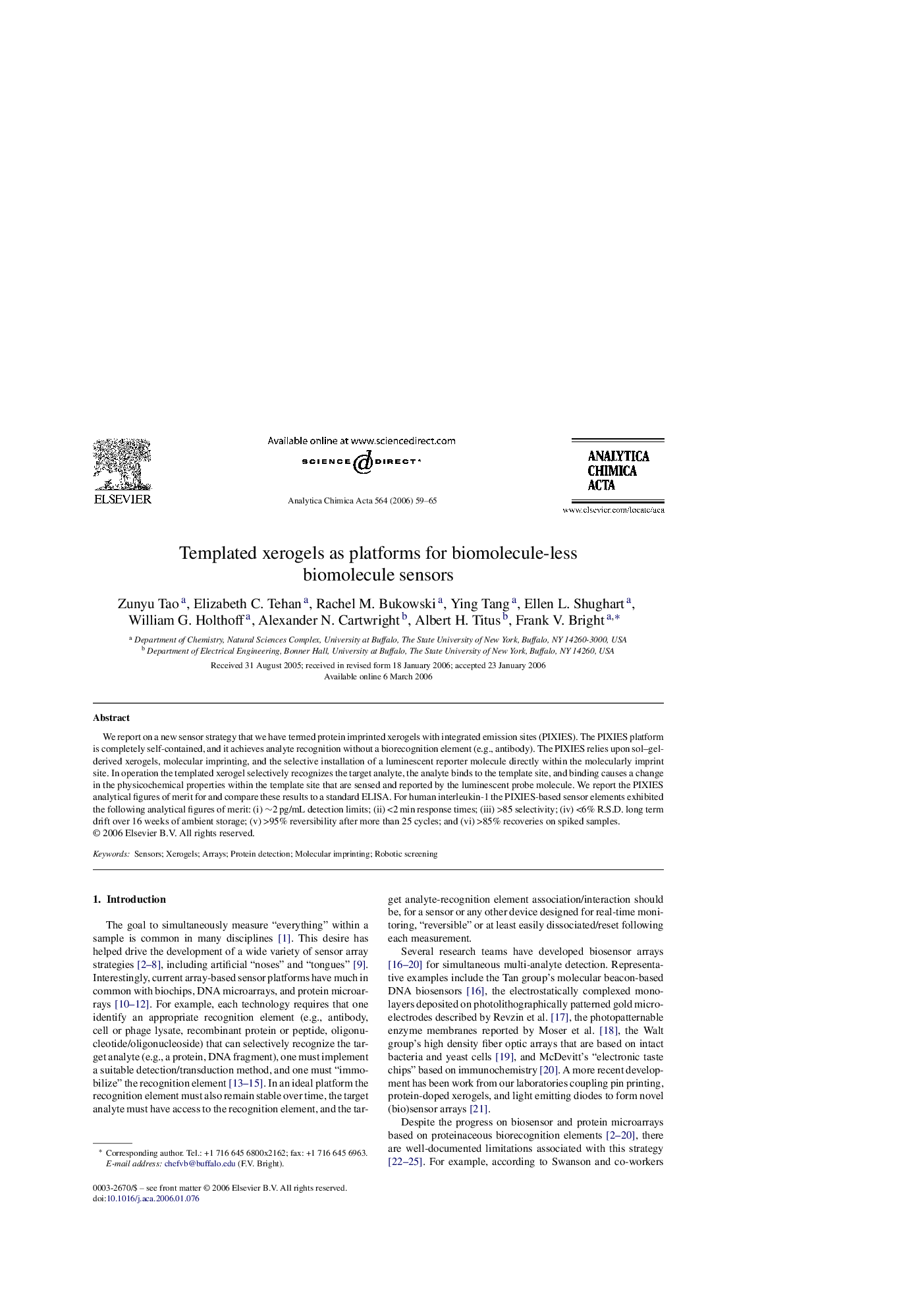| Article ID | Journal | Published Year | Pages | File Type |
|---|---|---|---|---|
| 1172022 | Analytica Chimica Acta | 2006 | 7 Pages |
Abstract
We report on a new sensor strategy that we have termed protein imprinted xerogels with integrated emission sites (PIXIES). The PIXIES platform is completely self-contained, and it achieves analyte recognition without a biorecognition element (e.g., antibody). The PIXIES relies upon sol-gel-derived xerogels, molecular imprinting, and the selective installation of a luminescent reporter molecule directly within the molecularly imprint site. In operation the templated xerogel selectively recognizes the target analyte, the analyte binds to the template site, and binding causes a change in the physicochemical properties within the template site that are sensed and reported by the luminescent probe molecule. We report the PIXIES analytical figures of merit for and compare these results to a standard ELISA. For human interleukin-1 the PIXIES-based sensor elements exhibited the following analytical figures of merit: (i) â¼2Â pg/mL detection limits; (ii) <2Â min response times; (iii) >85 selectivity; (iv) <6% R.S.D. long term drift over 16 weeks of ambient storage; (v) >95% reversibility after more than 25 cycles; and (vi) >85% recoveries on spiked samples.
Related Topics
Physical Sciences and Engineering
Chemistry
Analytical Chemistry
Authors
Zunyu Tao, Elizabeth C. Tehan, Rachel M. Bukowski, Ying Tang, Ellen L. Shughart, William G. Holthoff, Alexander N. Cartwright, Albert H. Titus, Frank V. Bright,
